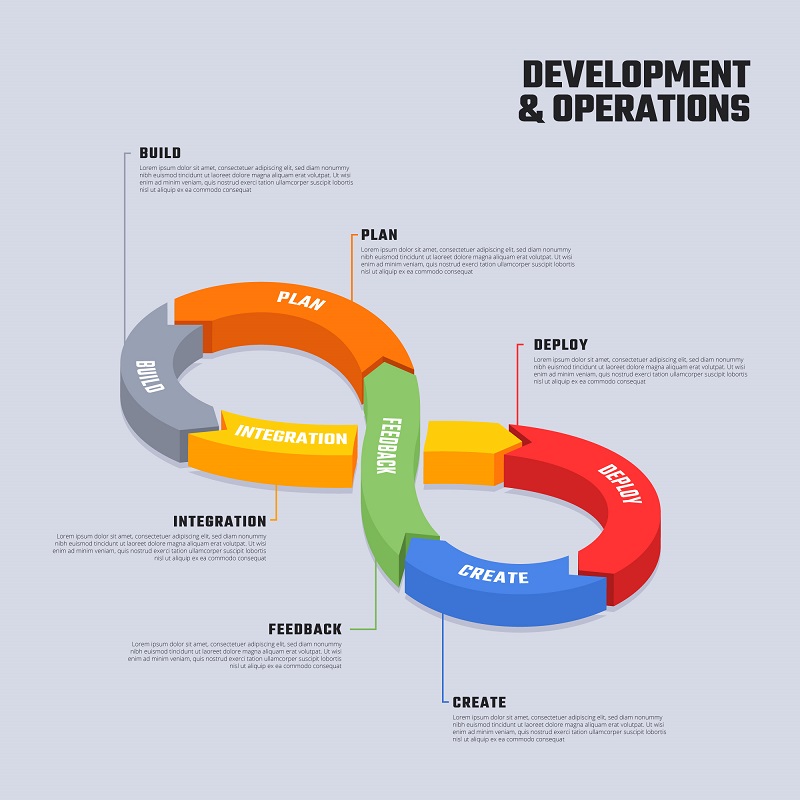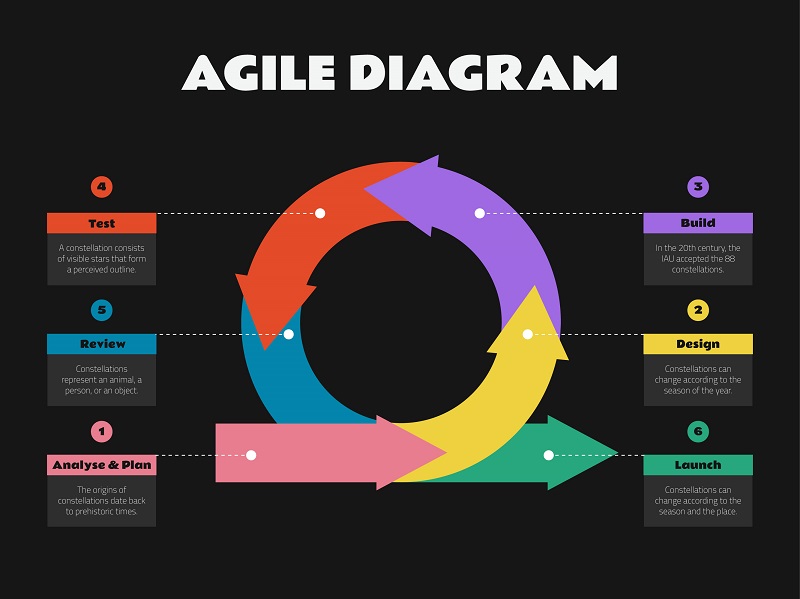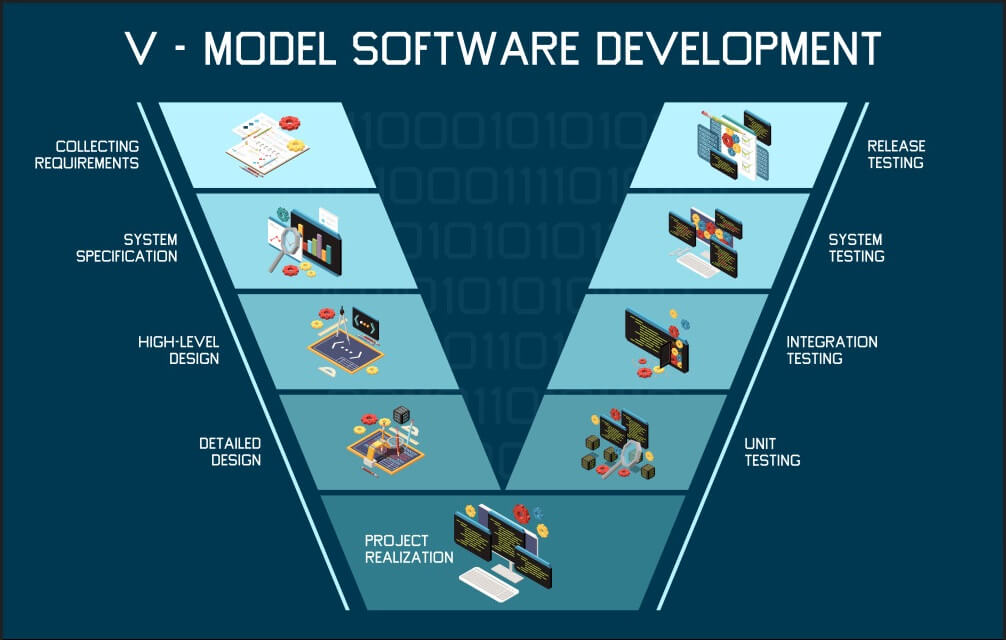What is SDLC? (Software Development Life Cycle)
The journey from a software idea to a fully operational product is a complex process, fraught with challenges yet ripe with opportunities. This intricate journey is navigated through a structured framework known as the Software Development Life Cycle (Software Development Life Cycle).
This systematic approach serves as the backbone for software engineers and developers worldwide, guiding them through various phases from initial requirement gathering to the final deployment and maintenance.
So, if you’ve ever found yourself pondering how a software concept evolves into a tangible product, you’re about to embark on an enlightening voyage through the Software Development Life Cycle universe.
How was the SDLC (software Development Life Cycle)Created?
Let’s trace the origins of the Software Development Life Cycle takes us back to the early days of computing. The need for a structured approach became evident when software projects began to fail due to a lack of organization and planning.
Engineers and project managers collaborated to create what we now know as Software Development Life Cycle. This framework emerged as a set of guidelines designed to produce high-quality software that meets or exceeds customer expectations, reaches completion within times and cost estimates, and does so in a systematic, organized manner.
Why is Software Development Life Cycle (SDLC)Important?
If you navigate the labyrinthine world of software development without a map is a recipe for disaster. That’s where the Software Development Life Cycle comes into play. Software Development Life Cycle serves as this crucial roadmap, outlining each phase of the process from inception to completion. It ensures that every stakeholder, from developers and project managers to clients and end-users, is on the same page. The framework helps in mitigating risks, reducing errors, and ensuring that the end product aligns with the initial objectives.
The Role of Security in Software Development Life Cycle
Security isn’t just a feature; it’s a necessity. Gone are the days when security measures were tacked on as an afterthought. In modern Software Development Life Cycle practices, security is integrated right from the get-go. This proactive approach ensures that vulnerabilities are identified and addressed early, reducing the risk of costly breaches down the line. Is security just an afterthought in your Software Development Life Cycle?

Software Development Life Cycle Phases
Phases of SDLC are as below.
1. Requirement Gathering and Analysis
Understanding the client’s needs is the cornerstone of any successful software project. This phase involves meticulous research and analysis to define the project’s scope and objectives.
2. Design
Once the requirements are clear, the next step is crafting a design blueprint. This serves as the project’s architectural skeleton.
3. Implementation or Coding
Here’s where the rubber meets the road. Developers start building the software, piece by piece, adhering to the design blueprint.
4. Testing
No software is ready for deployment without rigorous testing. This phase ensures that all bugs are identified and fixed.
5. Deployment
After successful testing, the software is deployed in the client’s environment for real-world use.
6. Maintenance
Software isn’t a ‘set it and forget it’ entity. Ongoing maintenance is crucial for long-term success.
Code Implementation: The Real Cooking Begins
We can think of the code implementation phase as the actual cooking process. You have your recipe (design), your ingredients (requirements), and now it’s time to cook (code). Coding is like being a chef in a high-tech kitchen. Here, instead of knives and pans, you have Integrated Development Environments (IDEs) and programming languages as your utensils. If you’ve got a ‘sous-chef,’ think of them as your version control system—Git, for example.
It keeps track of all the changes and helps you revert to a previous ‘dish’ if the current one turns into a disaster.
Testing: Quality Control or the “Taste Test”
Picture Gordon Ramsay walking into your kitchen (codebase). He’s there to critique, scrutinize, and recommend. This is what the testing phase looks like in the world of custom software development. It’s not enough to just cook up something; you have to ensure it tastes good (functions well) to everyone (end-users). You can’t serve raw chicken (buggy software) to your guests (users); that’s a recipe for disaster. Testing tools like Selenium and JUnit are your taste testers, ensuring every bite (function) delivers the flavor (output) it promises.
Deployment: The Dinner is Served
The aroma fills the room, the plates are set, and its finally time to serve the dish. Deployment is the equivalent of laying your well-cooked meal on the dining table. But wait, the job’s not done yet. You need to monitor how everyone is finding the food. In tech terms, this means keeping an eye on how your software is performing in the real world, taking note of any hiccups or slowdowns.
Maintenance: The Never-ending Afterparty
You’ve probably heard of the phrase “The kitchen never sleeps.” Well, neither does software maintenance. After serving your meal, you can’t just walk away and never return to the kitchen.
New trends emerge, like the sudden popularity of veganism or gluten-free diets. In software lingo, this could be the rise of mobile-first design or increased focus on data security. So, you adapt. You tweak the recipe, add new spices, or even revamp the whole menu. Software maintenance is about keeping your product up-to-date with technological advances, fixing any newly discovered bugs, and perhaps adding new features.
You don’t become a Gordon Ramsay or a Mark Zuckerberg overnight.
The nuances of each phase deserve attention and mastery. Skipping a phase or underestimating its importance is like forgetting to add salt—everything turns bland. So, the next time you dive into developing software, remember, you’re not just coding; you’re cooking, you’re taste-testing, you’re serving, and you’re evolving. Bon Appétit!
Software Development Life Cycle Models
1. Waterfall Model
The Waterfall Model, often considered the traditional approach to Software Development Life Cycle, follows a linear and sequential path. Each phase must be completed before the next begins, offering a straightforward but rigid structure. This model is best suited for projects with well-defined requirements and where change is not expected. However, its lack of flexibility can be a significant drawback, especially for long-term projects where requirements may evolve.
2. Iterative Model
Unlike the Waterfall Model, the Iterative Model allows for more flexibility and adaptability. The project is divided into smaller parts, each undergoing its development cycle. This approach enables teams to refine and revise the software as it evolves, making it particularly useful for projects where requirements are expected to change or are not fully understood from the outset.
3. Agile Model
The Agile Model has become the go-to approach for many modern software development projects. It emphasizes collaboration, customer feedback, and rapid iteration. Teams work in short “sprints” to produce functional components of the software, allowing for frequent reassessment and adaptation. This model is ideal for projects that need to adapt quickly to market changes or customer needs.

4. Spiral Model
The Spiral Model combines elements of both design and prototyping in stages, making it a more evolved version of the Waterfall and Iterative Models. It’s particularly useful for large, complex, and high-risk projects. The model focuses on early identification and reduction of project risks, allowing for iterative enhancement as each spiral loop is completed. This makes it a flexible and adaptable choice for projects where risk assessment is crucial.
5. Lean Model
Derived from Lean Manufacturing principles, the Lean Model focuses on delivering high-quality software in the shortest cycle time. It emphasizes efficiency, aiming to deliver more value with fewer resources. The model encourages continuous improvement and is highly adaptable, making it suitable for projects where time and resources are limited but quality cannot be compromised.
6. V-Shaped Model
The V-Shaped Model is an extension of the Waterfall Model but with added validation and verification steps. Each development stage has a corresponding testing phase, ensuring that each part of the software is rigorously tested before moving on to the next stage. This model is excellent for projects where high reliability is required, but it shares the Waterfall Model’s rigidity, making it less suitable for projects with changing requirements.

Software Development Life Cycle Best Practices
Best practices in Software Development Life Cycle serve as more than just guidelines; they are the pillars that uphold the structure of a successful software project. These include but are not limited to, regular code reviews to ensure code quality, comprehensive testing phases that cover all possible scenarios, and continuous feedback loops with stakeholders for constant improvement. Adopting these best practices can significantly reduce project risks and increase the likelihood of delivering a successful product. What are the non-negotiable best practices in Software Development Life Cycle?
Software Development Life Cycle Documentation
In the realm of software development, documentation serves as the project’s historical record, instructional guide, and future reference. It’s a critical component that often gets overlooked but is indispensable for long-term project success. Documentation starts from the requirement gathering phase and continues through maintenance, covering every aspect of the project. This includes project plans, technical specifications, user manuals, and even inline code comments. Proper documentation ensures that everyone involved, from developers and project managers to future maintainers, understands the project’s intricacies. Can you afford to skip Software Development Life Cycle documentation?
The Software Development Life Cycle is the linchpin that holds the complex process of software creation together. From the initial planning and design phases to the rigorous testing and final deployment, each stage plays a pivotal role in the project’s success. Various models offer different approaches, but the core principles remain consistent—organization, clarity, and a relentless focus on quality. As we’ve explored, adopting best practices and maintaining thorough documentation can significantly elevate the quality of the end product.
Why Choose BrainerHub: Elevate Your Software Dreams into Reality
In a world teeming with tech companies, what sets BrainerHub apart? Why should you entrust your software development projects to us? The answer lies in our unwavering commitment to excellence, innovation, and client satisfaction. Let’s delve into the unique attributes that make BrainerHub the best tech company in India.
1. Unparalleled Expertise in Software Development Life Cycle
BrainerHub isn’t just another tech company; we are masters of the Software Development Life Cycle. Our team of seasoned developers and project managers are well-versed in various Software Development Life Cycle models, from Waterfall to Agile. We don’t just build software; we craft solutions tailored to your specific needs.
2. Cutting-Edge Security Measures
In today’s digital landscape, security is not a luxury; it’s a necessity. At BrainerHub, we integrate state-of-the-art security protocols right from the initial phases of Software Development Life Cycle. Your software isn’t just functional and user-friendly; it’s also impenetrable fortresses of data protection.
3. Best Practices as Standard Protocol
Many companies claim to follow Software Development Life Cycle best practices, but at BrainerHub, these are not mere buzzwords. They are the foundation of every project we undertake. From rigorous code reviews to exhaustive testing phases, we leave no stone unturned in our quest for perfection.
4. Comprehensive Documentation
We understand the importance of thorough documentation in Software Development Life Cycle. Our meticulous documentation ensures that your project is not just a one-time success but a blueprint for future endeavours. Every detail, from project plans to user manuals, is documented for your convenience and future reference.
5. Client-Centric Approach
Your vision is our mission. We prioritize your needs and feedback at every stage of the project. Our agile methodologies allow us to adapt to project changes swiftly, ensuring that the final product aligns perfectly with your objectives.
6. Proven Track Record
Don’t just take our word for it; our portfolio speaks volumes. We’ve successfully delivered a myriad of projects across various sectors, earning us the title of the best tech company in India. Our satisfied clients are a testament to our expertise and commitment to excellence.
7. Competitive Edge
In a rapidly evolving tech world, staying ahead of the curve is crucial. BrainerHub is not just a follower of cutting-edge technologies; we are pioneers. Our innovative solutions give you a competitive edge in the market, setting you miles apart from your competitors.
8. Transparent Pricing
Quality doesn’t have to come at a premium. Our transparent pricing models offer you top-notch services without any hidden costs. We provide the best value for your investment, ensuring that every penny spent is a step towards unparalleled quality and success.
Ready to Partner with the Best?
If you’re looking for a tech company that combines expertise, innovation, and a client-centric approach, your search ends here. Choose BrainerHub for your next software development project and experience the pinnacle of technological excellence. As we wrap up this comprehensive guide, let’s not forget the importance of SDLC Best Practices. These aren’t mere guidelines; they’re the pillars that uphold the structure of a successful software project. From regular code reviews to exhaustive testing phases, adhering to SDLC Best Practices ensures that you’re on the path to excellence.
Last but certainly not least, let’s talk about SDLC Documentation. This often-overlooked aspect serves as the historical record and future reference for your project. Proper SDLC Documentation can be a lifesaver, especially when you’re scaling or making changes to the software. It’s like the instruction manual you wish you had when assembling that complicated piece of furniture; it makes life so much easier.
Choose BrainerHub as your software partner, and it’s like strapping a rocket to your project’s back
We’re the GPS to your digital journey, fine-tuning your route through the software cosmos. With us, it’s not just about codes; it’s about crafting digital symphonies. So why settle for ordinary when you can elevate to extraordinary with BrainerHub?

